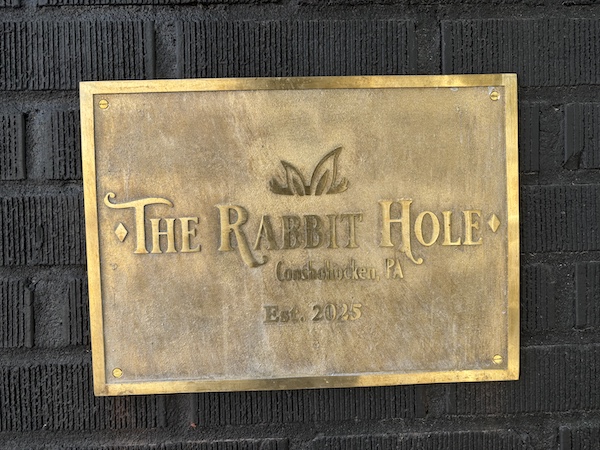
Conshohocken Sisters place 1st and 2nd in Soap Box Derby
July 5, 2023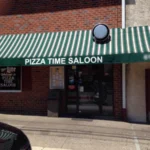
Instead of Franklin Beer Hall – Conshy Beer Hall?
July 27, 2023The Riverside Hotel – Have you ever heard of it? – Me Neither (not Conshohocken)
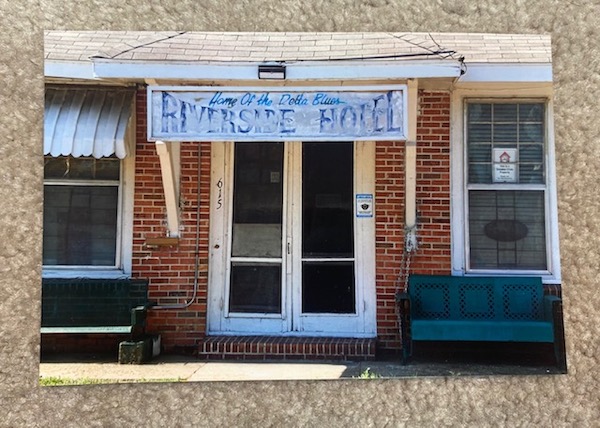
Traveling Down South with Jack and Donna
The Riverside Hotel
Have You Ever Heard of It-Me Neither
It’s a pretty Interesting Place
By Jack Coll
6-5-23 (published 7/8/2023)

Donna and I recently took off for about four weeks to spend some time in the South. (It really is OK to leave Conshohocken every once in a while) We crisscrossed back and forth through eleven states including Delaware, Maryland, Virginia, North and South Carolina, Georgia, Mississippi, Tennessee, West Virginia, Ohio and Pennsylvania.
I have two hobbies I spend a lot of time with, one of them is music, like most of us, I’ve had a life-long love affair with music, all kinds of music. As a youngster I was, as Harry Chapin would say in one of his songs, “Heavy into A M rock,” music lovers of my age understand the heavy A M rock, Herman’s Hermits, Dave Clark Five, Gary Lewis and the Playboys, Lovin Spoonful and anything Motown. Then came F M radio, the real heavy stuff. But I really fell in love with the diverse music that could be found at the Philadelphia Folk Festival, I attended the festival for more than two decades and just fell in love with all kinds of music.
When you talk about “Down South Music’ your talkin’ Rhythm and Blues, “Mississippi Blues,” Blues that can only be found and heard down in the Mississippi Delta, now we’re talking “Blues.” I had the time of my life visiting Blues Clubs, hot spots and museums. You can feel the Blues on your skin and smell it in the air when traveling through the dusty backroads of the Delta in search of the different landmarks.

Clarksdale Mississippi offers a smorgasbord of Blues sights and sounds including the famous “Crossroads,” where highway 61 crosses 49. Legend has it that Robert Johnson, who was born and raised in the Mississippi Delta during the 1920’s sold his soul to the Devil at this intersection and became a great bluesman, who was poisoned to death a few short years later, but not before recording 29 songs that are still hailed as some of the greatest blues ever recorded.
With that being said, I’m one of the many believers that the monument erected at the intersection of 61 and 49, is simply a commercial prop, the intersection monument serves a number of businesses in the area. I believe the mythical crossroads intersection is located about a mile outside Dockery Farms.
The history of Dockery Farms, Robert Johnson and the fact that I never believed in the tale of Johnson meeting with the devil is another story for another time.

Now my purpose for the visit to Clarksdale was to see this famous intersection where they say the legend of the deal went down, but also, I wanted to take a little self-tour of Clarksdale to visit a few Blues clubs and visit the “Delta Blues Museum,” which was a real treat. Now just across the lot from the Delta Blues Museum is the famous “Ground Zero” Blues Club that’s co-owned by Morgan Freeman. It doesn’t look like much from the outside, (Most of the true Blues Clubs don’t look like much from the outside but the clutter is by design aesthetic of the old “Juke Joints”) but walking inside the décor explodes into a time long-gone bye, really cool. The club got its name from the fact that Clarksdale has been historically referred to as “Ground Zero” for the blues. The club has appeared in many TV shows and publications.
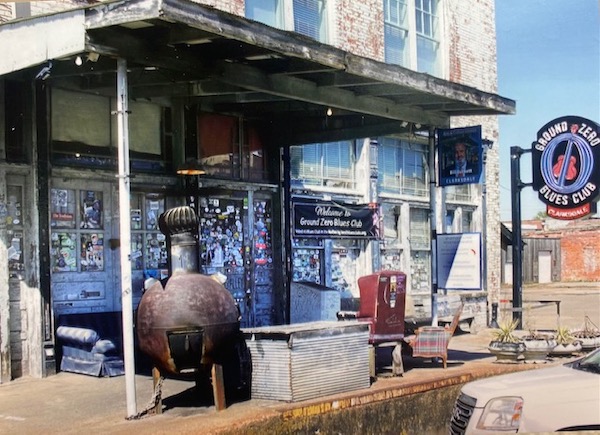

Standing on the front porch of Ground Zero you can look across Delta Avenue and see Delta Blues Alley, formerly Club Vegas, another well-known Blues Club. Just down the street about two blocks away is the Cat Head Delta Blues and Folk Art Store selling every single blues record ever made along with some of the greatest works of art in the Mississippi area. As an added bonus there seems to always be live music outside the store highlighting original music, and of course rhythm and blues music at its best. I stopped to talk to the musicians and had a nice conversation with one of the guitar players who had played the Philadelphia Folk Festival a few times, we had a nice conversation and I told him that I had probably seen him perform because I had attended the festival for so many years, (but I really didn’t remember him.)
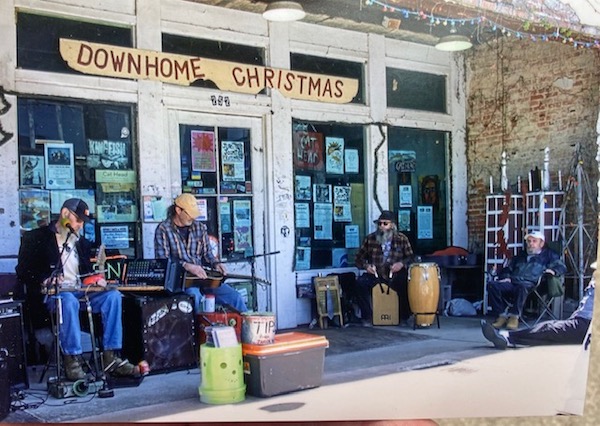
On my way to visit the Delta Blues Museum driving down Sunflower Avenue I passed “Red’s Lounge Blues Club,” another pretty well-known club, you’d never want to go inside judging from the outside but like I said the “homeless” looking exterior of these clubs are by design, but I was made to believe that Red’s Lounge still has some of the best blues music in the state during the late evening hours.

As I traveled further down Sunflower Avenue, I spotted this very old beat-up looking building with a State Marker plaque outside it and couldn’t help wonder what that building is, or was. So, I pulled over, parked and got out to investigate, it turned out to be a place called the “RIVERSIDE HOTEL,” I never heard of it and now I had a little side mission to find out about it.
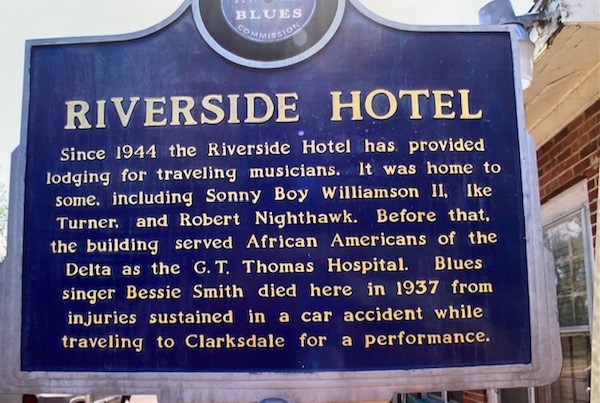
The plaque stated that since 1944 the Riverside Hotel provided lodging for traveling musicians and before that the building served as a hospital that cared for African Americans, I thought, “How interesting.” A few of the regular hotel guest of the day included Muddy Waters, Howlin’ Wolf and Sam Cooke. Duke Ellington spent time at the Riverside Hotel as did local Blues artist Sonny Boy Williamson, Robert Nighthawk, Raymond Hill, Ike Turner, Joe “Willie” Wilkins, James “Peck” Curtis, Johnny O’Neil, and Robert “Dudlow” Taylor. One other notable guest was the late John F. Kennedy Jr., who stayed at the hotel in 1991.
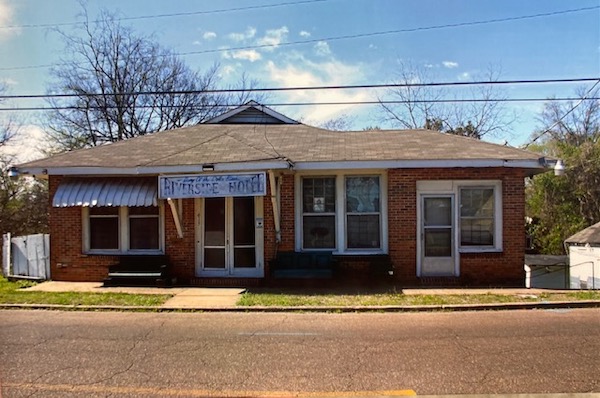
Before the Riverside Hospital the building was the G. T. Thomas Hospital and before that it was an eight-room house that had been converted into a hospital care facility for African Americans in 1931, it was one of four African American hospitals in the state of Mississippi at the time. The hospital was known, and will be forever known as the place where world renowned Blues performer Bessie Smith died following a car accident. I’ve heard of Bessie Smith mainly through a song written by Robbie Roberson and Rick Danko of the band called “Bessie Smith,” a tribute to the Blues singer. They recorded the song during the now famous “Big Pink” sessions with Bob Dylan, but it’s said that Dylan had no influence on the song, but I never realized just how famous she was, and the fact that she had Philadelphia ties.

Smith was an African American Blues singer from 1912-1937 known as “The Empress of the Blues.” She was the most popular female blues singer in the world during the 1920’s and 1930’s. Bessie performed with the best musicians of the day including Louis Armstrong who played on a number of her recordings including “Someday You’ll Be Sorry,” “Jeepers Creepers,” “St. Louis Blues” and “Ain’t Misbehavin,” along with about two dozen other songs.
She was later inducted into the Rock and Roll Hall of Fame in 1989. She was not only known as one of the greatest singers of her era but was also a major influence on blues and rock stars to follow like Ella Fitzgerald, Nina Simone, Billie Holiday, Bonnie Raitt who often cited Smith as a major influence on her work. Aretha Franklin, the Queen of Soul covered many of her songs and Janis Joplin also covered a couple of her songs. It was said that Joplin would sit and listen to Smith’s songs and memorize her style. It was noted that Led Zeppelin, The Rolling Stones and Eric Clapton also have been influenced by Bessie Smith.
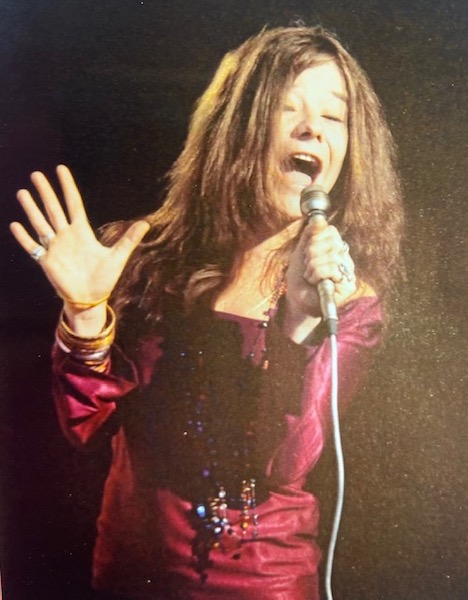
Janis Joplin in 1970 acknowledged her debt to Smith when she paid for a cemetery Head Stone, Smith’s grave had been unmarked since 1937. Dory Previn wrote a song about Janis Joplin and the tombstone, “Stone for Bessie Smith,” for her album “Mythical Kings and Iguanas.” Smith’s funeral was held in Philadelphia Pa., a week after she died on October 4, 1937. Initially, her body was laid out at Upshur’s Funeral Home. As word of her death spread through Philadelphia’s black community, her body had to be moved to the O. V. Catto Elks Lodge to accommodate the estimated 10,000 mourners who filed past the coffin on Sunday October 3, 1937. Smith was buried at Mount Lawn Cemetery in Sharon Hill. Jack Gee, Smith’s husband thwarted all efforts to purchase a stone for his estranged wife, once or twice pocketing money raised for that purpose.
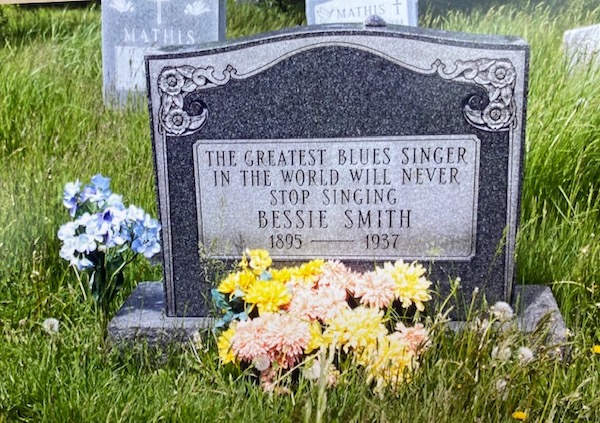
I recently visited Mount Lawn Cemetery to take a few photographs of Smith’s Headstone. During my more than 30 years of writing articles about people dead and alive, I have often visited graveyards to photograph a headstone, a picture of a headstone tends to bring my subject to life, it kind of makes them real if that makes sense. Bessie Smith is and was such a legend I must have stood in that graveyard starring at her head-stone for a good fifteen minutes thinking of the legend under my feet and the fact that Janis Joplin paid for the headstone.
While staring at the headstone I noticed that there was a mistake inscribed on the stone. My research stated that Bessie was born on April 15, 1894, the inscription on the stone states that Bessie was born in 1895, I doubled check the death and found that she was indeed born in 1894.
A short distance from Smith’s grave was the grave of the late great Thomasina Winifred Montgomery, known to the world as Tammi Terrell, a Motown legend who sang many duets with Marvin Gaye. Just across the way at Mount Lawn Cemetery the body of the great young basketball player Hank Gathers, laid in peace. Gathers was an outstanding basketball player and former MVP of the Albert C. Donofrio Tournament held right here in Conshohocken.
The actual story of Smith’s death takes us back to Riverside Hospital. Here’s the sad, sad story of Bessie Smith’s death. Smith, who was the highest paid African American performer of the 1920’s, and 1930’s, at the time of her fatal accident on September 26, 1937 she was a passenger in her Packard automobile with her lover Richard Morgan driving. The two were on their way from Memphis to Clarksdale to spend the night. She was to appear the following day with the Traveling Show “Broadway Rastus” in the community of Darling, about 20 miles northeast of Clarksdale.
Apparently, Richard Morgan who was driving misjudged the speed of a slow-moving truck ahead of him. Morgan tried to avoid the truck by driving around its left side, but he hit the rear of the truck side-on at a high speed. The tailgate of the truck sheared off the wooden roof of Smith’s Packard. Smith, who was in the passengers seat, probably with her right arm or elbow out the window, took the full brunt of the impact, Morgan escaped without injuries.
First person to arrive at the scene of the accident was Dr. Smith, (No relation) who was a Memphis surgeon. In the early 1970’s Dr. Hugh Smith gave a detailed account of the accident and the scene to Bessie’s biographer Chris Albertson, which is determined to be the most reliable eyewitness testimony about the event surrounding her death. When Dr. Smith arrived at the scene he examined Bessie, who was lying in the middle of the road with obviously severe injuries. Her right arm was almost completely severed at the elbow. He stated that this injury alone did not cause her death. He attributed her death to extensive and severe crush injuries to the entire right side of her body, consistent with a sideswipe collision.
Dr. Smith got a little help from another guy and moved Bessie’s body from the middle of the road over to the shoulder of the road. Dr. Smith asked the other guy to run to a house about 500 feet up the road and call an ambulance. Time passed and there was no sign of an ambulance so, Dr. Smith suggest they take Bessie to a hospital in their car. They worked on clearing the back seat of Dr. Smith’s car for Bessie when they heard a car approaching at a high rate of speed. The car crashed into Dr. Smith’s car at a very high rate of speed and sent his car careening into Bessie Smith’s overturned Packard completely wrecking it. The oncoming car ricocheted off Dr. Smith’s car into the ditch on the right, barley missing Bessie Smith who was still laying on the shoulder of the road.
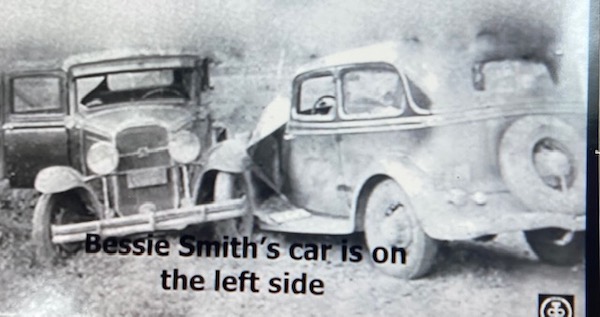
It was a young couple in the oncoming car and they did not appear to have any serious injuries. Two ambulances then arrived from Clarksdale, one from the black hospital and the second from the white hospital. Bessie Smith was taken to the G. T. Thomas Afro-American Hospital in Clarksdale, where her right arm was amputated. She died that morning without regaining consciousness.
Smith’s body was returned to Philadelphia where she had lived for a time on Christian Street in South Philly, she also met her husband Jack Gee who was a security guard in the area back then. The two married on June 7, 1923, just as her first record was being released. As we stated earlier Smith became the highest-paid black entertainer of the day, heading her own shows, which sometimes featured as many as 40 troupers, and touring in her own custom-built railroad car.
The marriage soured by 1929 when both of them were having affairs with other partners. Smith later entered a common-law marriage with an old friend, Richard Morgan, who was Lionel Hampton’s uncle. She stayed with him until her death.
I found the Riverside Hotel a very interesting find in Clarksdale, Donna and I ran into a number of little surprises like that during the course of our trip, perhaps I’ll find some time to write and share portions of our trip with you.
In the beginning of this article, I stated that I had two hobbies, or two interest that I spend a lot of time with. I stated that one of them was music, a life-long love of mine. The second little hobby I spend a lot of time studying is the history and struggles of the Civil Rights Movement. Perhaps in the near future I can share a little bit about what I learned during my visit down South, rehash a few things I already knew, and what its like to walk in the civil rights footsteps all these years later.
As a side note I typically don’t go off script to NAME DROP, however this subject lent itself to name-dropping and as you can see, I took full advantage of it.
I hope you enjoyed this article and found it as interesting as I did, when you talk about the deep south you’re talking about a lot of hidden treasurers, if you’re interested, stay tuned to Conshystuff because you’ll only find these stories here.
PHOTOGRAPHS ABOVE INCLUDE:
The “Crossroads monument at the intersection of highway 61 and 49 in Clarksdale Mississippi. The location marks where legend has it that Robert Johnson made a deal and sold his soul to the devil in exchange for incredible talent playing his guitar, that there-after would make him famous.
Robert Johnson’s Mississippi State marker located at the site of his grave behind the Little Zion M. B. Church, North of Greenwood Mississippi along Money Road.
Two photos showing Ground Zero Blues Club also located in Clarksdale Mississippi, across from the Delta Blues Museum. The club is rather famous being co-owned by Morgan Freeman and has shown up in a number of movies and television shows.
Two photos painted on the side of the Ground Zero building depicting Robert Johnson and his meeting with the devil.
Delta Blues Alley Café’, formerly Club Vegas located just across the street from Ground Zero.
Cat Head Delta Blues and Folk Art Store located at 252 Delta Avenue featuring a large collection of Blues music and art and live music seven days a week.
Red’s Lounge and Blues Club located on Sunflower Avenue in Clarksdale just up the street from the Riverside Hotel.
Three photographs of the Riverside Hotel including the Mississippi State Marker also located on Sunflower Avenue.
A banner with the photo of Bessie Smith alongside the Riverside Hotel where Bessie passed away in 1937 when the hotel was the Riverside Hospital.
Janis Joplin, who paid for Bessie Smith’s grave stone located at Mount Lawn cemetery 33 years after Smith’s death, Joplin, herself was dead just two short months later. This photograph is courtesy of Baron Wolman, taken from his book “Every Picture Tells a Story…The Rolling Stone Years.” Wolman was Rolling Stone Magazine’s first photographer and had unlimited access to super-stars for a number of years, it’s a book worth purchasing for all music fans.
Bessie Smith’s head stone paid for by Joplin located at Mount Lawn Cemetery just outside Sharon Hill in Darby Township.
An internet photograph of Bessie Smith’s Packard following the accident that led to her death.
Side note, Jack and Donna loved their travels and Jack is writing more civil rights articles, as well as BB King Museum and Fannie Lou Hamer Civil Rights Museum. Jack and his granddaughter visited the Conshohocken Free Library recently and a conversation got sparked when she picked up a book on Ruby Bridges.

